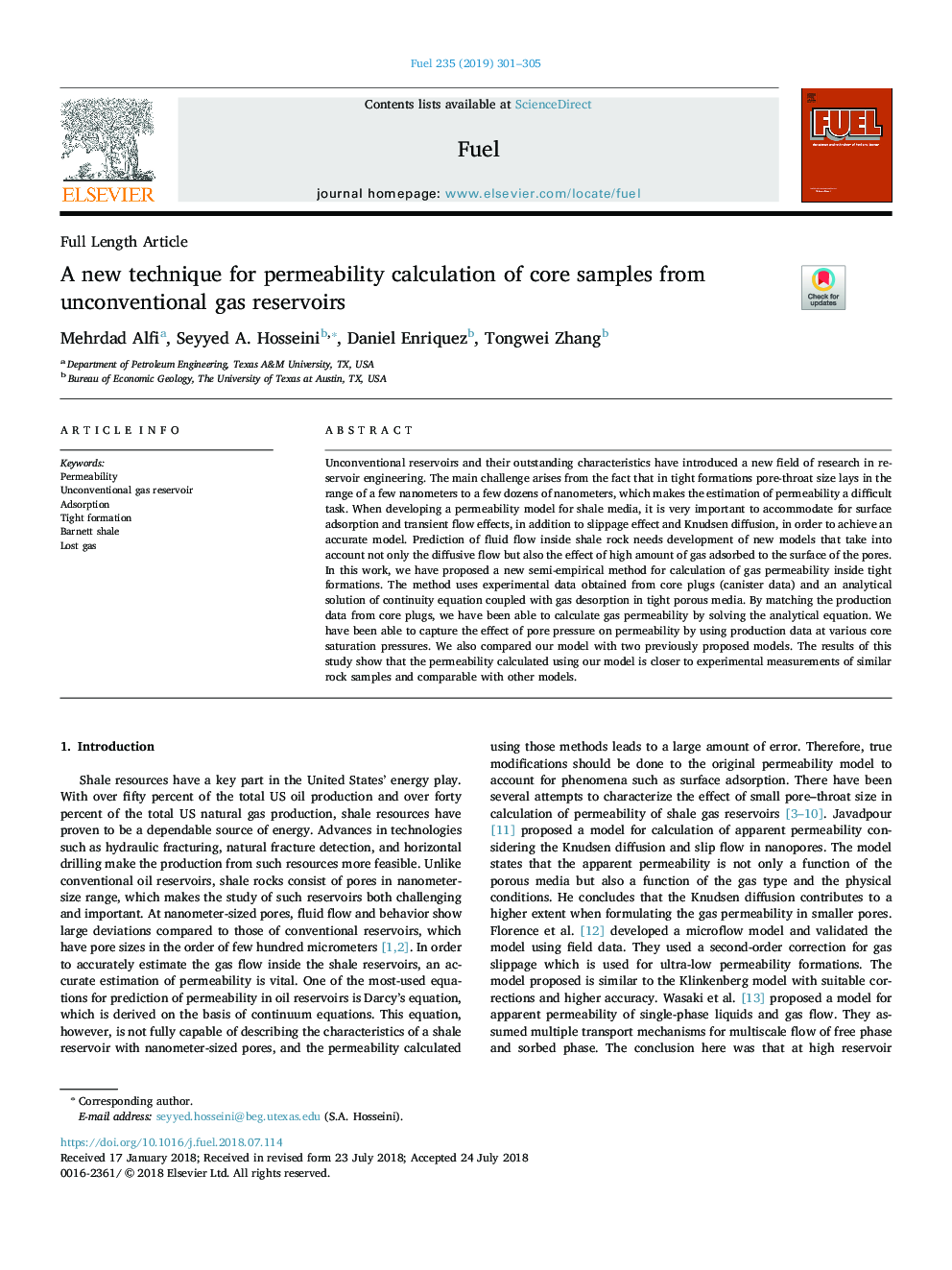| Article ID | Journal | Published Year | Pages | File Type |
|---|---|---|---|---|
| 6629916 | Fuel | 2019 | 5 Pages |
Abstract
Unconventional reservoirs and their outstanding characteristics have introduced a new field of research in reservoir engineering. The main challenge arises from the fact that in tight formations pore-throat size lays in the range of a few nanometers to a few dozens of nanometers, which makes the estimation of permeability a difficult task. When developing a permeability model for shale media, it is very important to accommodate for surface adsorption and transient flow effects, in addition to slippage effect and Knudsen diffusion, in order to achieve an accurate model. Prediction of fluid flow inside shale rock needs development of new models that take into account not only the diffusive flow but also the effect of high amount of gas adsorbed to the surface of the pores. In this work, we have proposed a new semi-empirical method for calculation of gas permeability inside tight formations. The method uses experimental data obtained from core plugs (canister data) and an analytical solution of continuity equation coupled with gas desorption in tight porous media. By matching the production data from core plugs, we have been able to calculate gas permeability by solving the analytical equation. We have been able to capture the effect of pore pressure on permeability by using production data at various core saturation pressures. We also compared our model with two previously proposed models. The results of this study show that the permeability calculated using our model is closer to experimental measurements of similar rock samples and comparable with other models.
Related Topics
Physical Sciences and Engineering
Chemical Engineering
Chemical Engineering (General)
Authors
Mehrdad Alfi, Seyyed A. Hosseini, Daniel Enriquez, Tongwei Zhang,
